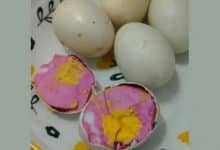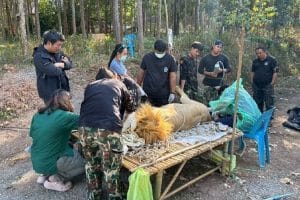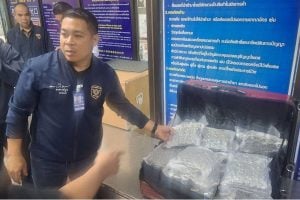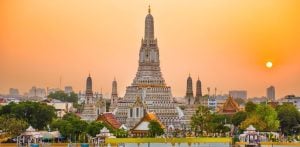Where to travel in Thailand in August [2025]
Where you should go for a riveting and delicious escape into the depths of Thai food and culture
![Where to travel in Thailand in August [2025] | Thaiger](https://thethaiger.com/wp-content/uploads/2025/07/night-market.jpg)
There’s no better way to experience Thailand than through its cuisine. In the rainy season, flavours bloom alongside the landscape, steam rises from market pots, the snap of chilli echoes through alleyways, and rain makes every bite more vivid.
“I could happily eat Thai food every day for the rest of my life.” — Anthony Bourdain
When you travel around Thailand in August, follow the rain and follow the flavour. This is the month for slow markets, noodle stalls under tin awnings, and dishes that stay with you longer than the weather.
And while you’re out and about, chasing the scent of delicious cuisine, don’t forget to stay covered with travel insurance from SafetyWing.
A few notes on Thai food culture
In Thailand, food is an expression of affection, rhythm, and daily poetry. Instead of “how are you,” locals often greet each other with, “Gin khao reu yang?” (Have you eaten rice yet?)
Meals are meant to be shared. Dishes are placed at the centre, and everyone dips in. Thai food is about balance: sweet, sour, salty, bitter, and spicy all dancing in one bite.
How to eat: A spoon in your right hand, fork in the left. Chopsticks are only used for some noodle dishes.
Spice levels: If you’re unsure, ask for mai phet (not spicy), phet nit noy (a little spicy), or phet mak (very spicy). But be warned, Thai spice is not for the faint-hearted.
And don’t be fooled by plastic stools, flickering fans, or open-air kitchens. In Thailand, the most unforgettable meals often come with their simplest moments, marked by unforgettable flavours.
We are still in the midst of the rainy season in August, and if you are travelling around with automobiles, remember to keep safe and stay mindful of road conditions amid the downpours.
Where should you go in August?
| Jump to section | Description |
|---|---|
| Bangkok | Bangkok’s rainy season brings steaming boat noodles, spicy stir-fries, and dim sum, especially around Victory Monument, Talad Phlu Market, and Yaowarat (Chinatown). |
| Chiang Mai | In Chiang Mai, enjoy Khao Soi (curry noodle soup), Sai Ua (grilled pork sausage), and stir-fried wild mushrooms, especially around Khao Soi Khun Yai and The Thanin Market. |
| Isaan | In Isaan, savour spicy Som Tam (papaya salad), grilled Gai Yang (chicken), and Jeow Bong (chilli dip), found at Khon Kaen Night Market and The Thung Sri Muang Night Market. |
| Trang | Trang offers Moo Yang (roast pork), dim sum, and Khanom Jeen (rice noodles with curry), especially at Trang Moo Yang, Ruan Thai Dim Sum, and the Trang City Municipality Market. |
| Nakhon Si Thammarat | Nakhon Si Thammarat offers Gaeng Som (sour curry), crab curry with betel leaves, and roti at Krua Nai Nang and local beachside restaurants. |
| Phuket | Phuket’s food highlights include Mee Hokkien Phuket (noodles with seafood), Moo Hong (braised pork belly), and Oh Tao (oyster omelette), enjoyed at Lock Tien Food Court and Mor Mu Dong. |
| Stay protected while you eat your way through Thailand | Explore Thailand’s flavours with peace of mind. SafetyWing offers flexible travel insurance for all types of travellers. With two plans (Essential and Complete), you’re covered for medical treatment, trip delays, and more. Simple sign-up and affordable pricing. |
Bangkok: Broth, smoke, & midnight bites
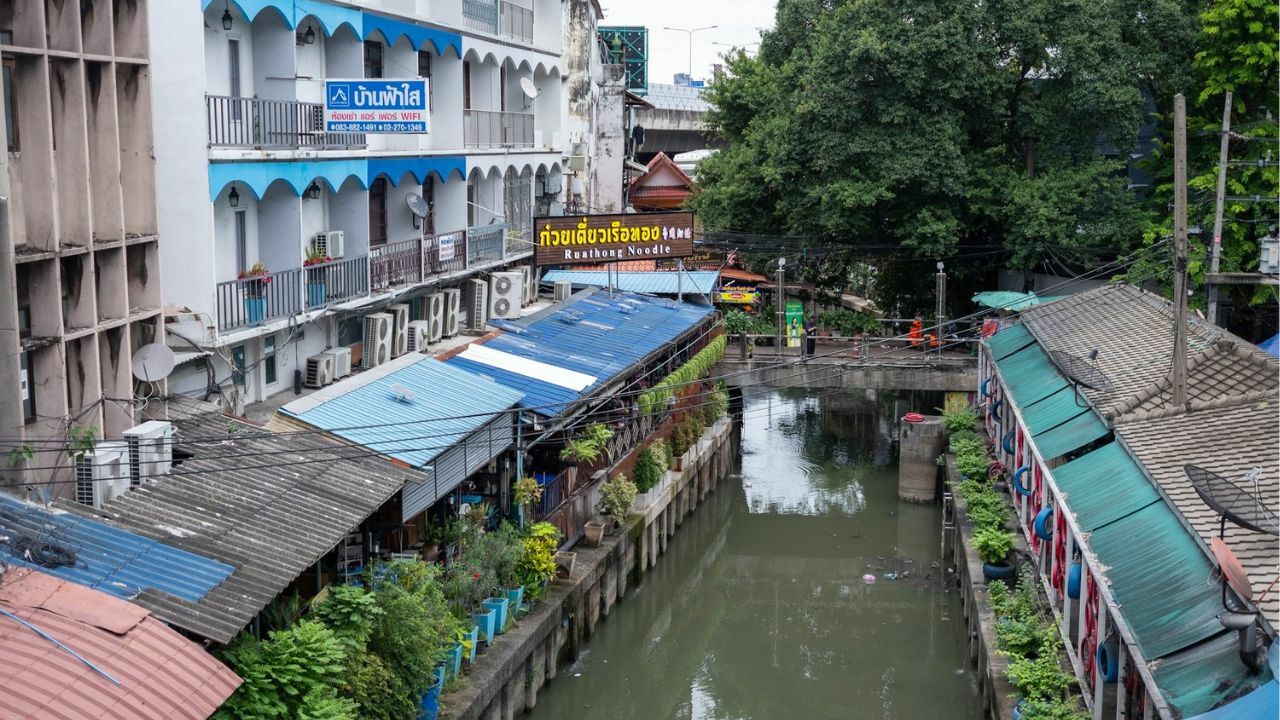
Bangkok is a feast at all hours, but in the rainy season it feels even more alive. Umbrellas bloom over sidewalk grills, noodle steam mingles with monsoon air, and rain taps on metal roofs while the wok sizzles.
What to eat?
Boat noodles (kuay teow rua): Deeply savoury, thick with beef or pork, hints of cinnamon and star anise in dark, meaty broth.
Pad Kra Pao Moo: Stir-fried pork with holy basil, garlic, and fiery chillies, topped with a crispy fried egg.
Dim sum: Steamed dumplings with shrimp or pork, dipped in sweet-sour sauces and chased with Thai tea.
Where to go:
Near Victory Monument (Samsen canal) for boat noodles at Boat Noodle Alley.
Talad Phlu Market for wok-fired stir-fries.
Yaowarat (Chinatown) for rainy-night dumpling runs.
Chiang Mai: Curry noodles, mountain spice, and a sense of home
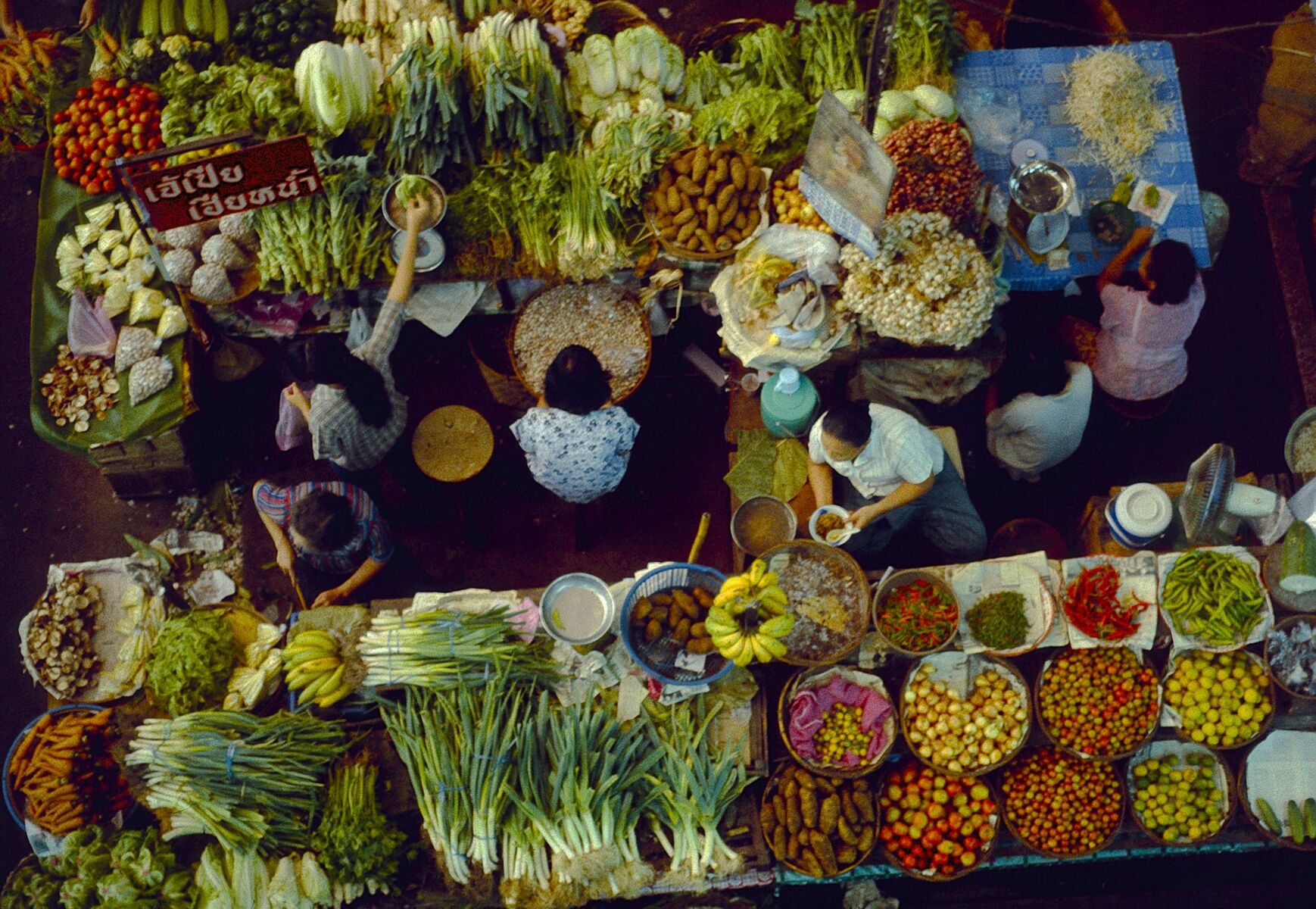
Up north in Thailand, August brings mist, markets, and slow, golden light. Chiang Mai’s food is bold yet comforting, with herbal warmth that’s perfect for rainy mornings.
What to eat?
Khao Soi: Rich coconut curry noodle soup with a spicy undertone, topped with crispy noodles and pickled mustard.
Sai Ua: Grilled pork sausage with lemongrass, kaffir lime, chilli, and turmeric.
Stir-fried wild mushrooms: Umami-packed with local herbs, sometimes tossed in chilli or garlic oil.
Where to go:
Khao Soi Khun Yai for authentic local bowls.
Huen Phen for traditional Lanna cuisine.
The Thanin Market for early morning produce, spice pastes, and snacks.
Isaan: Fire, funk & fermented soul

In Thailand’s northeast, the food is bold, raw, and unforgettable. Sticky rice is the staple, grilled meat the norm, and som tam the national obsession.
What to eat?
Som Tam (papaya salad): Crunchy, sharp, spicy-sour-sweet, pounded in a mortar with lime, chilli, garlic, and fish sauce.
Gai Yang: Grilled chicken marinated in coriander root, fish sauce, and pepper, cooked over charcoal.
Jeow Bong: Smoky chilli dip with fermented fish and tamarind, perfect with rice or vegetables.
Where to go:
Khon Kaen Night Market for the local vendors.
Thung Sri Muang Night Market in Ubon Ratchathani.
Any roadside stall with a grill, a mortar, and a queue.
Trang: Dim sum, rain, & southern breakfasts
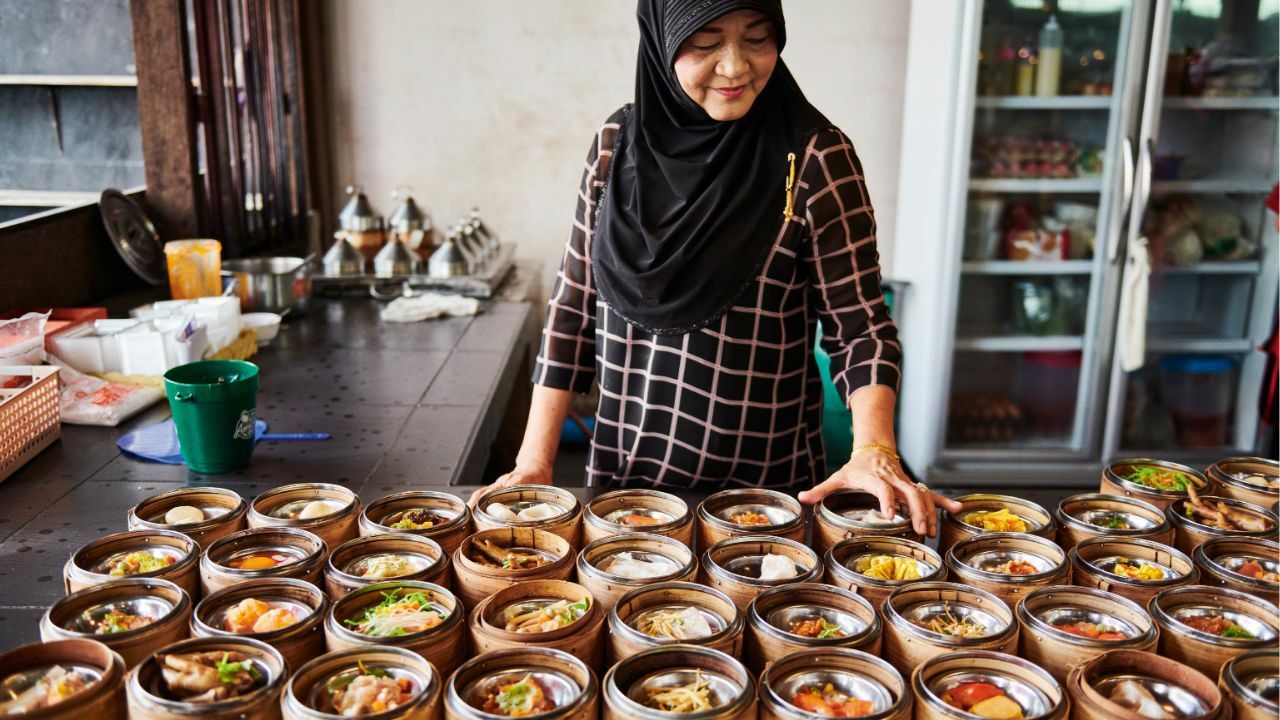
Trang wakes early, usually with a starving sensation pervading the region. Breakfast is a ritual of steam, spice, and sweetened Thai tea, especially lovely on a rainy morning.
What to eat?
Moo Yang: Caramelised five-spice roast pork with crackling skin.
Dim sum trays: Shrimp dumplings, custard buns, pork siu mai.
Khanom Jeen: Rice noodles served with curry and loads of fresh vegetables.
Where to go:
Trang Moo Yang for a mix of Thai and Chinese cuisine.
Ruan Thai Dim Sum for a huge selection of dim sum.
The Trang City Municipality Market for roti, rice dishes, and desserts.
Nakhon Si Thammarat: Sour curries by the sea
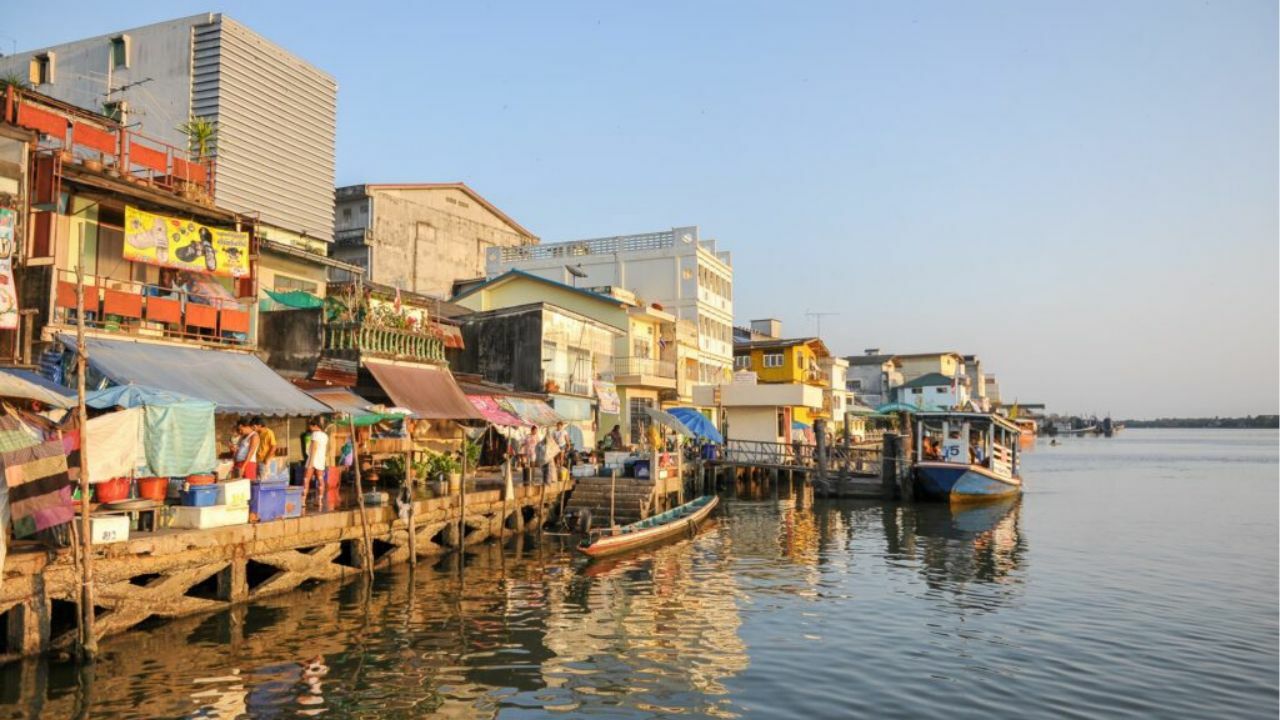
This southern gem is known for its bold, no-apology dishes. The rain rolls in from the sea, and the food rolls up with power and salivating pheromones.
What to eat?
Gaeng Som: Fiery turmeric-based sour curry with local fish.
Crab curry with betel leaves: Creamy, briny, and layered with spice.
Roti with curry or condensed milk: Crispy-edged and warm from the griddle.
Where to go:
Krua Nai Nang for soul-soothing curries.
Small beach restaurants and roadside kitchens.
Phuket: Rainy day seafood & Peranakan soul
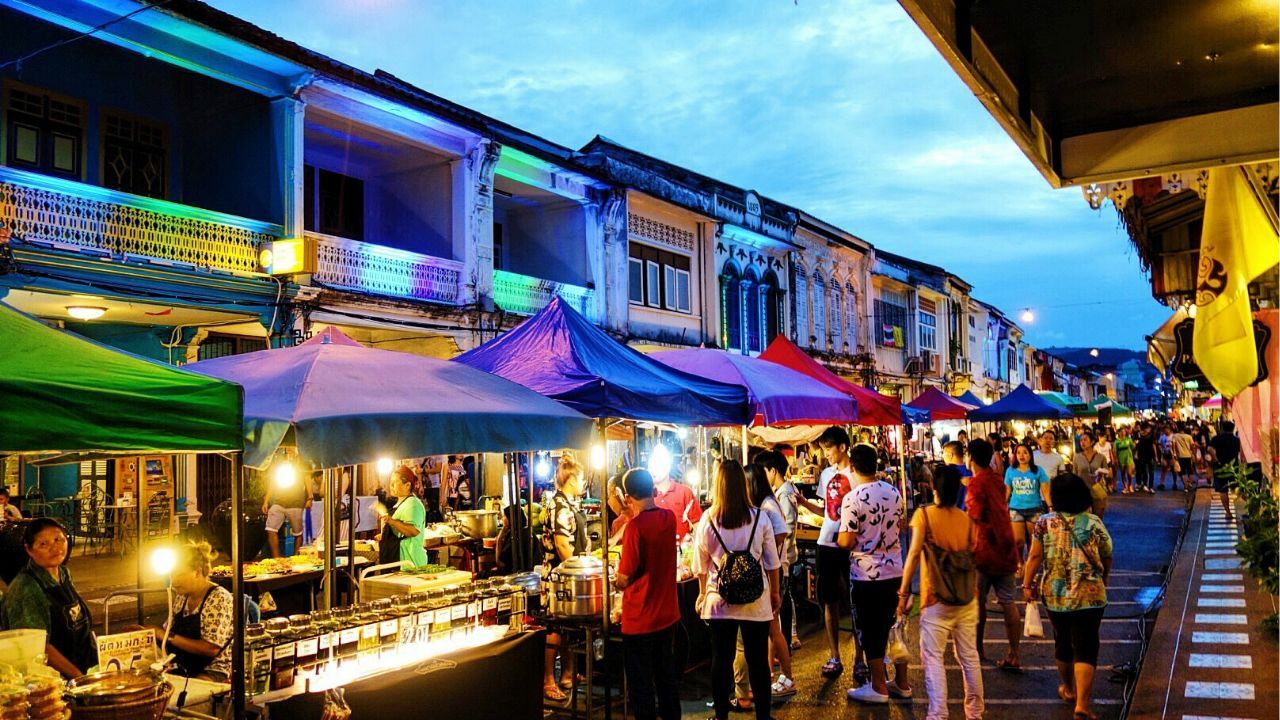
Phuket’s food tells stories of Chinese, Malay, and Thai ancestry. The rain makes everything richer: the curries darker, the noodles slicker, and the seafood sweeter.
What to eat?
Mee Hokkien Phuket: Thick egg noodles with squid, shrimp, and egg in savoury soy gravy.
Moo Hong: Slow-braised pork belly in peppery sweet soy.
Oh Tao: Oyster omelette with taro and bean sprouts on a sizzling pan.
Where to go:
Lock Tien Food Court, Old Town.
Mor Mu Dong, under wooden roofs by the mangroves.
Local markets during rain breaks.
Sweet ending
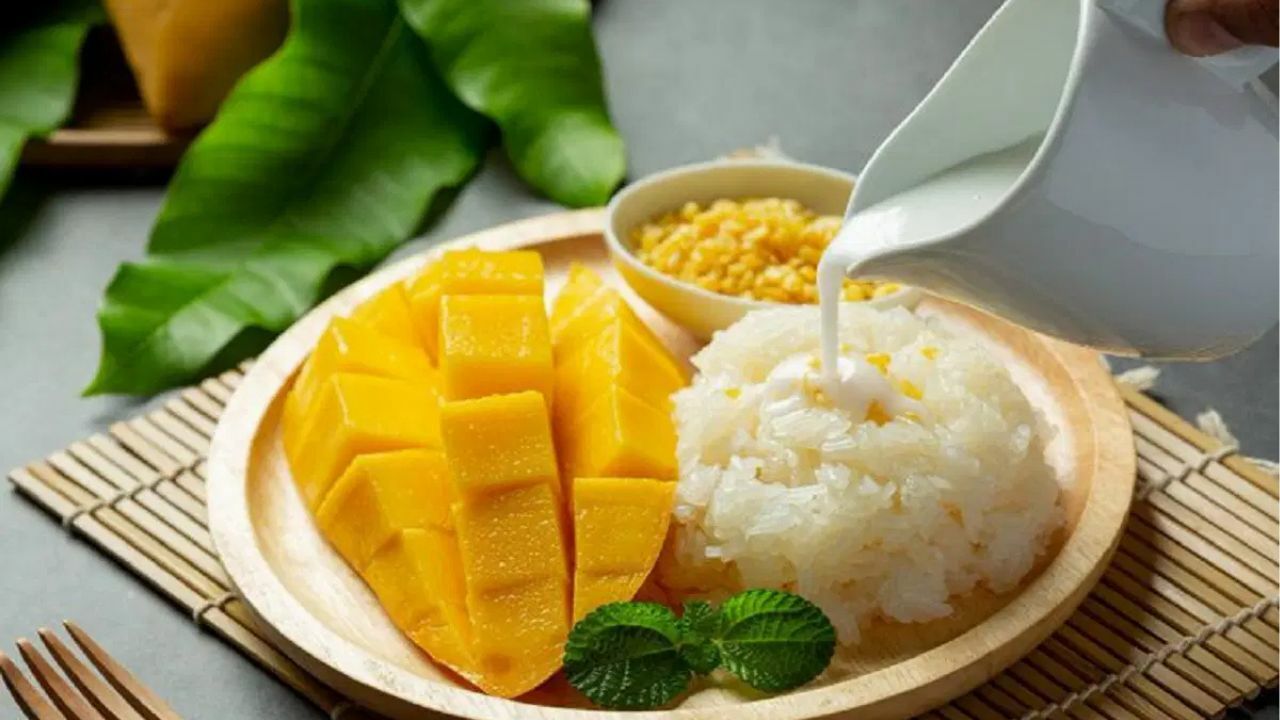
No Thai meal is complete without dessert. August is cool, wet, and slow, which is perfect for the treats that soothe and sweeten.
Mango sticky rice (khao niew mamuang): An all-time favourite of locals and tourists alike, featuring ripe mango, creamy coconut rice, and salted coconut drizzle with a slight crunch.
Thai iced tea (cha yen): Rich, sweet, and cold with a bright orange hue; perfect after a spicy meal.
Tub Tim Grob (red rubies): Chewy water chestnuts in coconut milk, scented with jasmine
Khanom Chan: Silky, pastel-layered jelly made with pandan.
Fak Thong Gang Buad: Soft pumpkin pieces simmered in coconut milk, exuding warmth and nostalgia.
You’ll find these in humble street markets, family-run cafés, and even served from a cart on a corner. Wherever you find them during your travels, they taste like Thailand in August: soft, sweet, and a little bit slowed down.
A taste of the moon
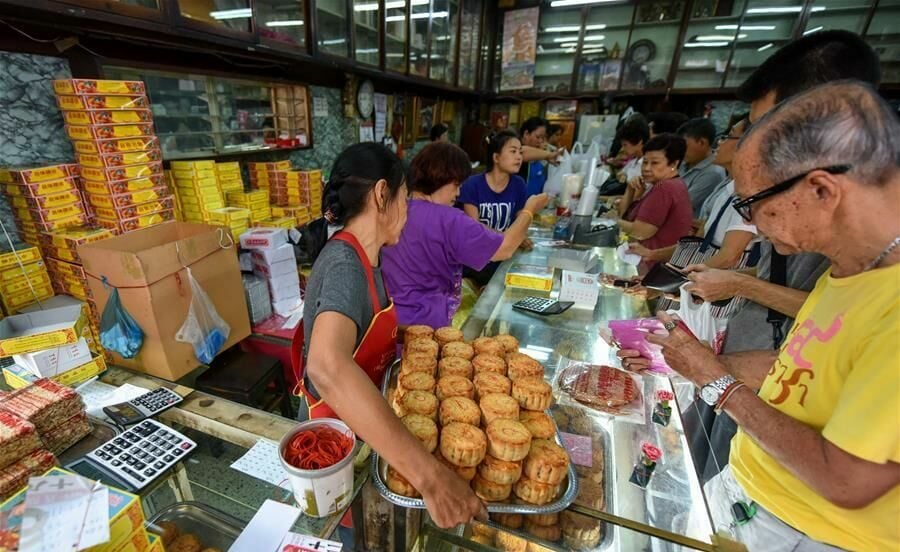
By late August, the lead-up to the Mooncake Festival begins in Thai-Chinese communities. Markets in Bangkok’s Yaowarat, Hat Yai, and Nakhon Sawan begin selling ornate, round mooncakes filled with lotus seed, salted egg yolk, red bean, or even durian.
Visit traditional bakeries or pop-up stalls to try these seasonal treats, sweet symbols of reunion and good luck.
Stay protected while you eat your way through Thailand

From street food stalls in Chiang Mai to night markets in Trang, when you travel through Thailand in August during the rainy season is a sensory adventure, but even the most delicious journeys can come with surprises. Slippery roads, sudden illnesses, or lost bags can quickly spoil the fun.
SafetyWing offers flexible travel insurance made for the modern traveller. With coverage in over 180 countries (including Thailand), their plans are perfect whether you’re here for a food-filled holiday or working remotely as a digital nomad.
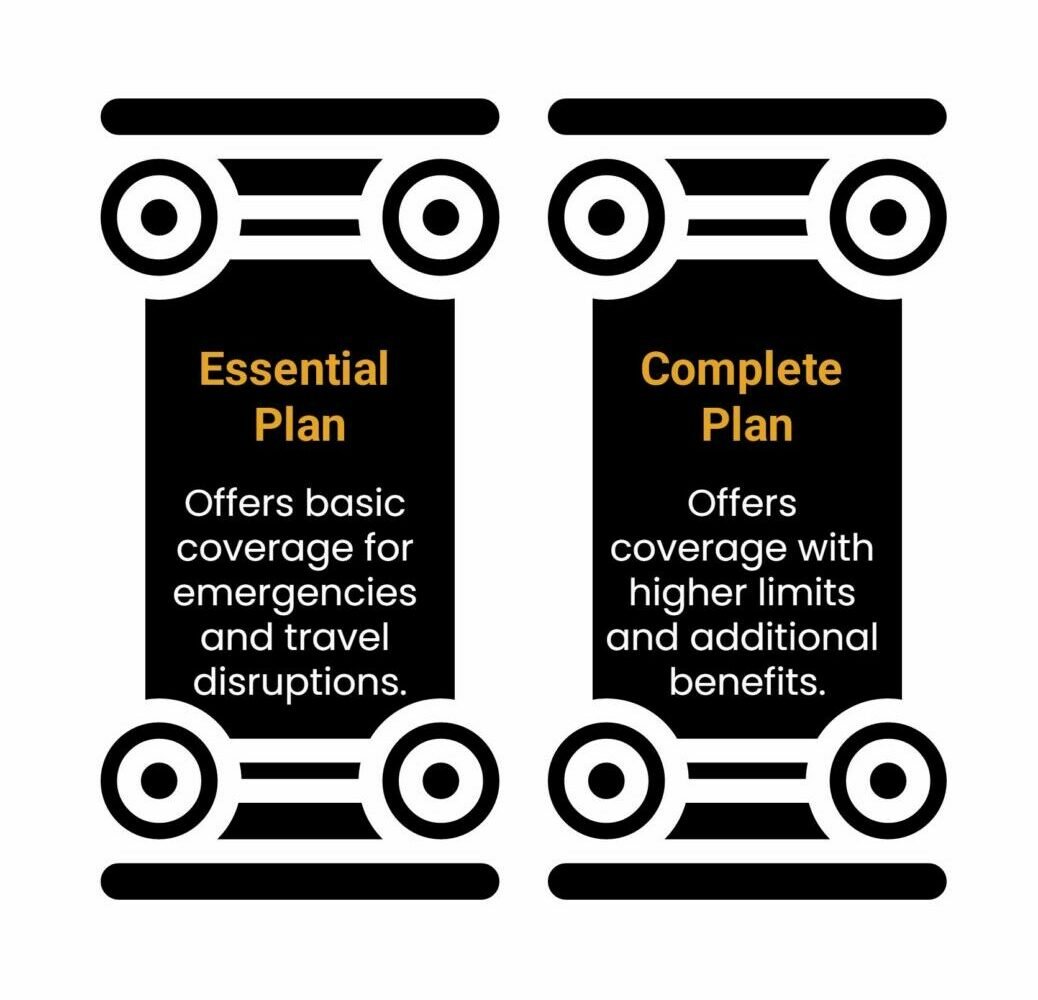
Choose from two options:
-
Essential Plan: Covers emergency medical treatment, hospital stays, medical evacuation, and trip delays, ideal for short-term food adventurers.
-
Complete Plan: Includes all essentials plus routine checkups, mental health support, maternity care, and home-country coverage, great for longer stays or remote workers settling in.
Registration is simple with the option to sign up online, even if you’re already abroad. The pricing remains reasonable even for travellers on a budget, which you can calculate below.
Rain or shine, it’s better to have peace of mind while you chase flavours across Thailand.
Final bite
“You learn a lot about someone when you share a meal.” — Anthony Bourdain
When you travel around Thailand this August, don’t follow the weather forecast. Follow the scent of grilled meat, the clang of a wok in the rain, or a line of locals waiting at a food stall with plastic chairs. That’s where the real Thailand is.
Let your appetite lead, let the rain fall, and trust the journey; this feeling only settles once a year, in the misty month of August.
This is the season to wander by flavour.
Sponsored
Latest Thailand News
Follow The Thaiger on Google News:

